A lot of people may think that science and religion are opposites, but there are many similarities between the two. The aim of this exhibition is to try to visually represent the wonders of our world and how it came into being and to hopefully encourage reflection and contemplation on the mystery of how and why we are here?
During this time of harvest and thanksgiving, we have decided it would be appropriate to consider the creation story. This opens up the very beginning of the bible in the first chapter of Genesis, and is written in a different style to the most of the rest of the bible. Much like Psalms, it is written lyrically with repeating movements and expressions. It is reminiscent of a poem or song.
With this in mind, there are scholars who believe that this chapter of the bible is less figurative, and that each day represents a period of time in the creation of the Earth. Take a look at each passage and the corresponding scientific information, reflect on the various theories while enjoying the artwork, contemplate some of the questions it asks and consider your own conclusions.
Most importantly, enjoy the show!
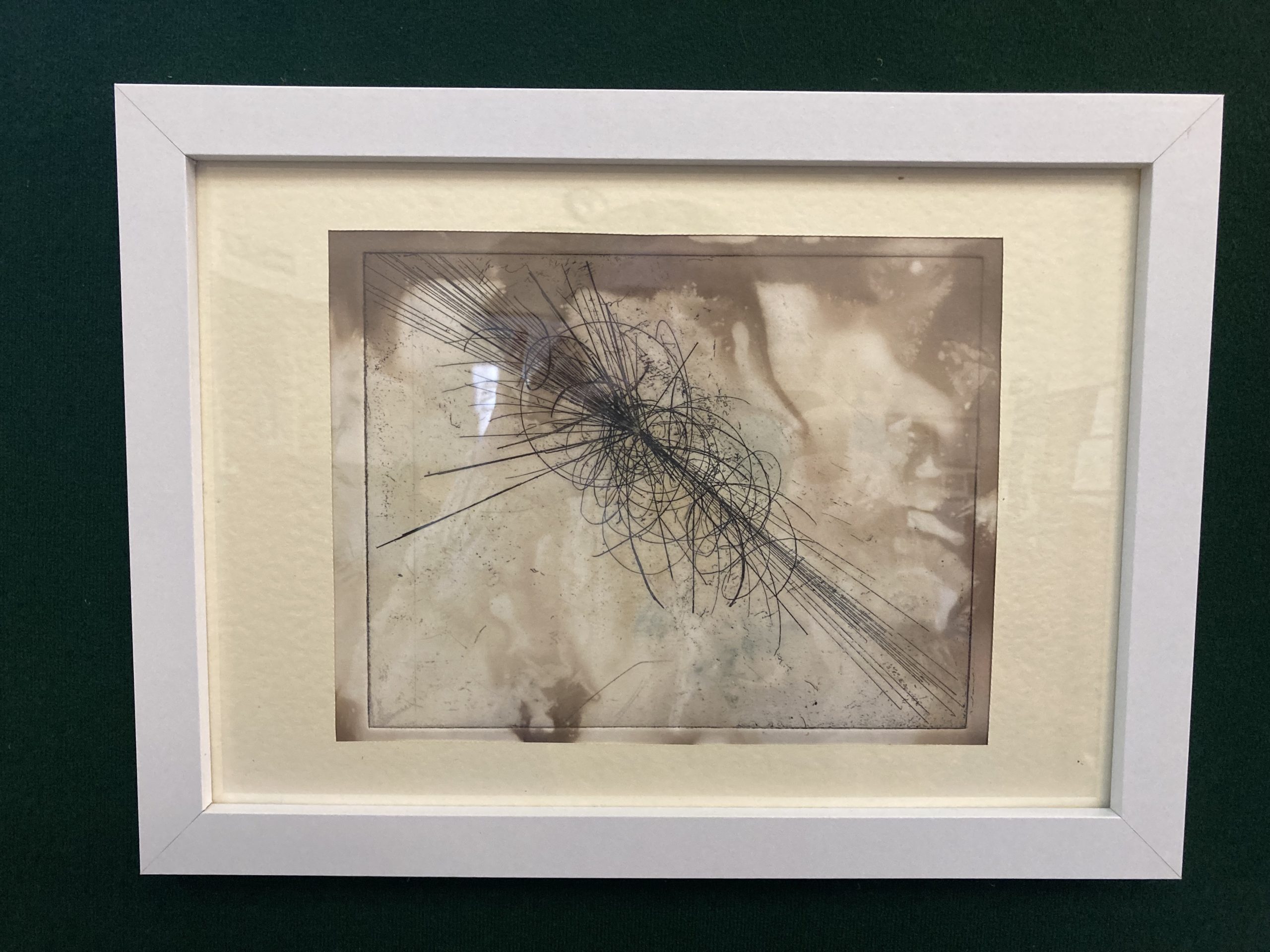
God says (Genesis 1:1-5):
In the beginning God created the sky and the earth. The earth was empty and had no form. Darkness covered the ocean, and God’s Spirit was moving over the water. Then God said, “Let there be light,” and there was light. God saw that the light was good, so he divided the light from the darkness. God named the light “day” and the darkness “night.” Evening passed, and morning came. This was the first day.
Scientists say:
The Big Bang Theory:
Based on Einstein’s theory of general relativity, the traditional Big Bang Theory posits that the universe began with with a single event – a single point of infinite density and temperature in space – which expanded suddenly and faster than the speed of light. This is the ‘bang’ of the theory. Evidence for this event in the leftover light and radiation from background cosmic microwaves, scientists determine the approximate age of the universe as 13.7 billion years old.
Higgs Boson Particle:
Also known as the ‘God Particle’, the Higgs Boson particles make up a ‘Higgs Field’ which gives the other particles mass as they travel through it by slowing down their movement. These particles were triggered in the Higgs Field one trillionth of a second after the Big Bang event.
Recombination:
For the first 380,000 years after this ‘Big Bang’ event, it is believed that the heat was so intense that it was literally too hot for light to shine. As it slowly cooled, hydrogen and helium were formed. Then, matter cooled enough for the electrons to combine with nuclei to form atoms. This process caused the universe to become transparent. This time of recombination was followed by a period of darkness before stars and other bright objects could form.
The first light:
Around 400 million years after the ‘Big Bang’, clumps of gas began to form the very first stars which emitted UV light as they burnt up most of their surrounding hydrogen gas. It wasn’t until later that more stable galaxies and solar systems formed.
Questions to consider:
– What caused the Big Bang?
– Where did the Higgs Boson (the ‘God Particle’) come from?
– What sparked the Big Bang event?
– What was there before the Big Bang?
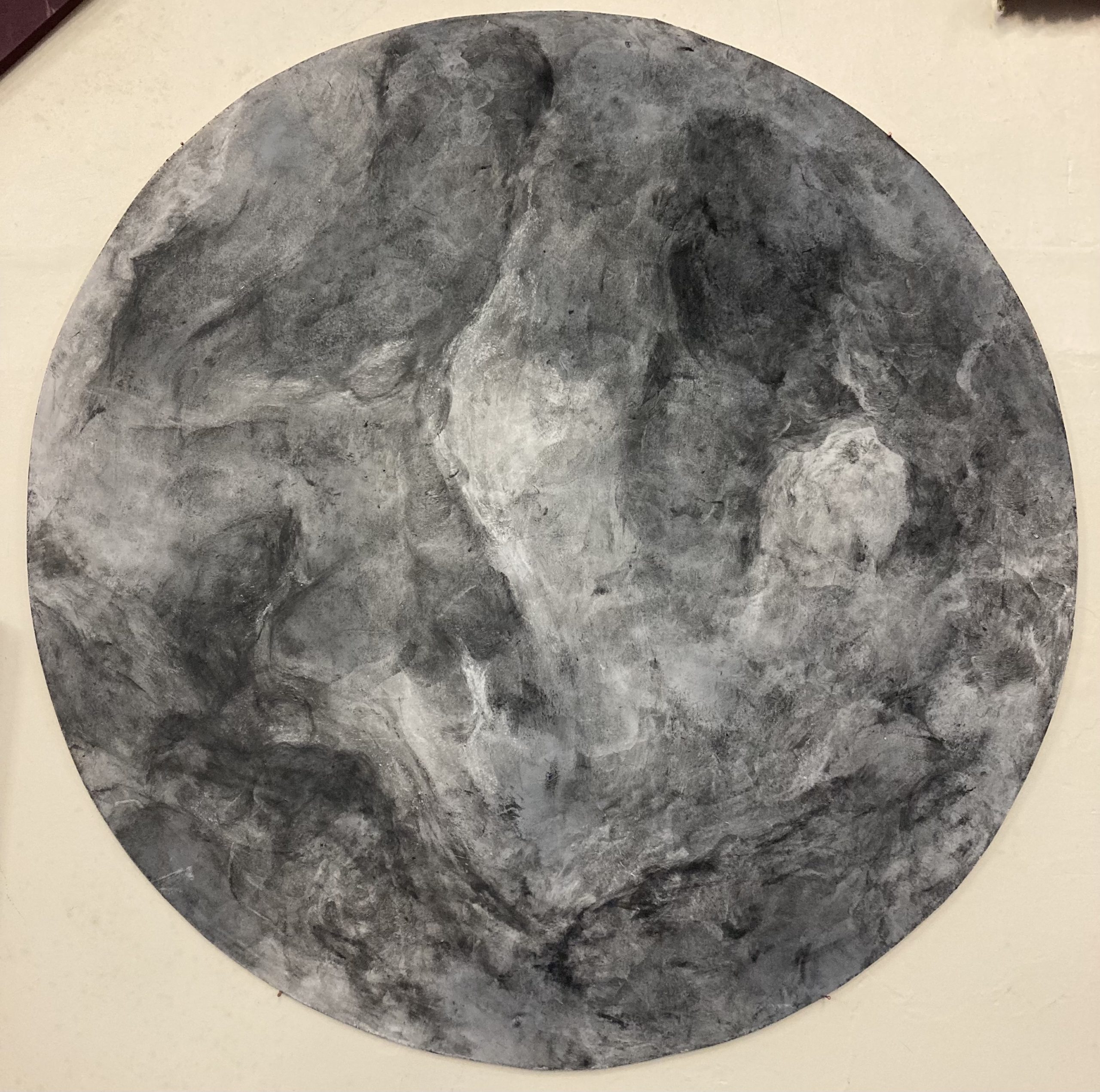
God says (Genesis 1:6-8):
Then God said, “Let there be something to divide the water in two.” So God made the air and placed some of the water above the air and some below it. God named the air “sky.” Evening passed, and morning came. This was the second day.
Scientists say:
When the earth formed 4.6 billion years ago, its surface was molten and the atmosphere mostly consisted of hydrogen and helium and was incredibly hot.
Once it cooled, gasses from volcanos that would eventually build the Earth’s crust formed an atmosphere that would be much too toxic to sustain our current life on Earth, mainly consisting of hydrogen sulphide, methane, ammonia and Carbon Dioxide. Even though at this point the sun was only about 70% as bright as it is today, the greenhouse gasses of this early atmosphere trapped enough of the sun’s heat to prevent the Earth from freezing over.
Roughly 1 billion years later, the surface of the Earth had cooled enough for water to collect on it. Eventually, most of the CO2 dissolved into these oceans and a tiny bacteria called ‘Cyanobacteria’ was the first organism to photosynthesise. It turned carbon dioxide, water and sunlight into oxygen. It is believed that amino acids and organic compounds found in meteorites that crashed into the young forming Earth may have kickstarted life.
Over time, tiny photosynthetic organisms produced enough oxygen to clear the methane from the atmosphere, turning the sky blue.
Questions to consider:
– What would have happened if any of these atmospheres were formed differently, would we still have reached the point of early life?
– How does the timing of the formation of our atmosphere differ from the story in creation?
– Why didn’t life just evolve to use methane as a form of substance instead of slowly eliminating it?
– If the atmosphere had not trapped the sun’s warmth, would life have evolved in the frozen world?
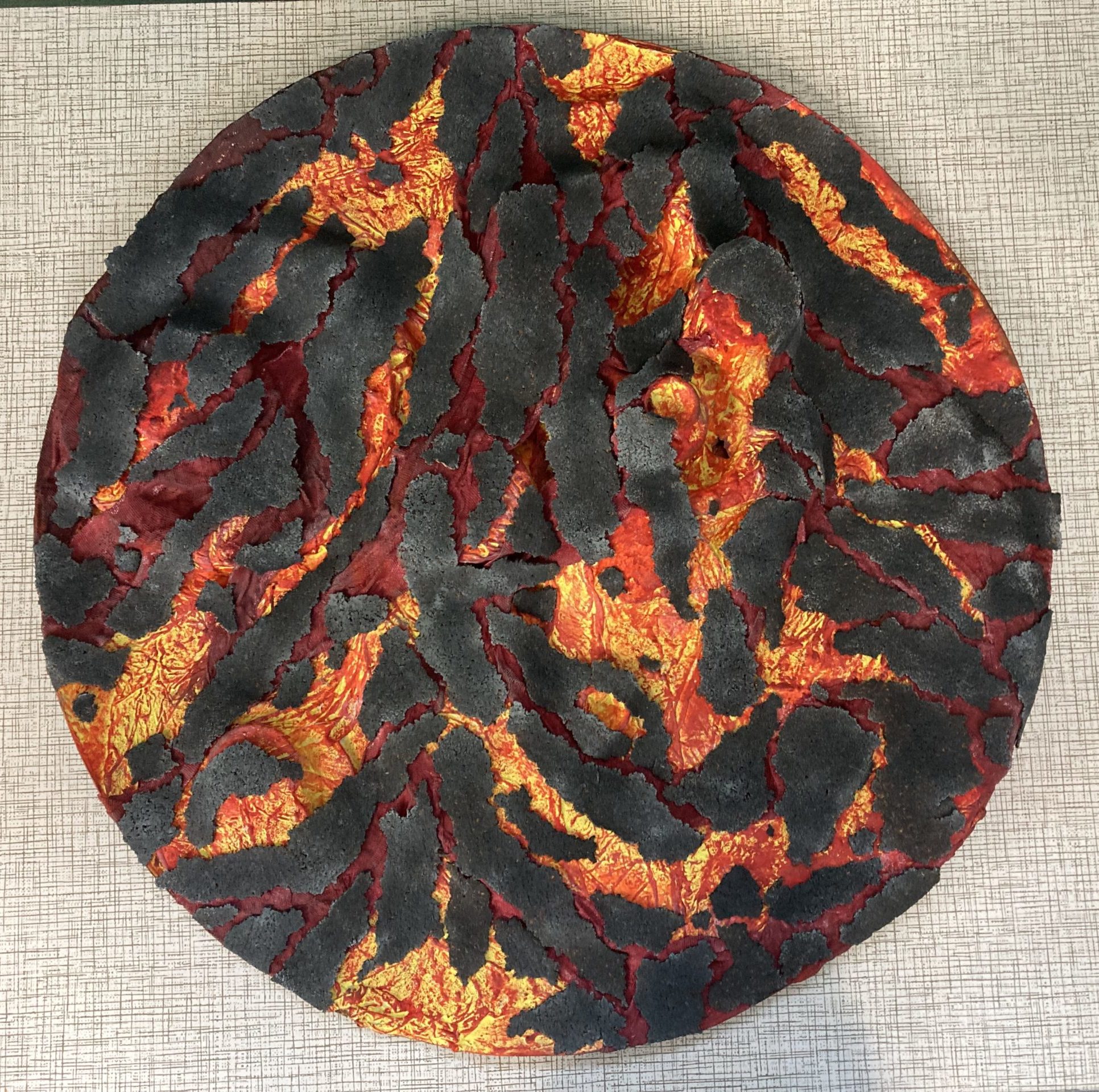
God says (Genesis 1:9-10):
Then God said, “Let the water under the sky be gathered together so the dry land will appear.” And it happened. God named the dry land “earth” and the water that was gathered together “seas.” God saw that this was good.
Scientists say:
As the Earth cooled around 3.8 billion years ago, a process called ‘degassing’ of the atmosphere continues over millions of years. As water vapour and gasses from molten rocks evaporated and reached the now cooler atmosphere, it condensed. This slowly cooled the Earth’s surface to form the Earth’s crust. New research suggests that this process may have been relatively rapid in a chaotic, catastrophic event, and only taken thousands instead of millions of years.
Once the surface of the Earth reached a temperature that was below the boiling point of water, this condensed water fell as rain and over centuries it pooled into the hollows of the Earth’s surface forming our oceans and seas.
God says (Genesis 1:11-13):
Then God said, “Let the earth produce plants—some to make grain for seeds and others to make fruits with seeds in them. Every seed will produce more of its own kind of plant.” And it happened. The earth produced plants with grain for seeds and trees that made fruits with seeds in them. Each seed grew its own kind of plant. God saw that all this was good. Evening passed, and morning came. This was the third day.
Scientists say:
The Oxygen Boom:
Between 700 and 550 million years ago (late Proterozoic era) the Earth experienced a huge boom in oxygen which saw a shift in the way that life developed. Any life form that found oxygen poisonous either receded to extremely airless habitats or went extinct. Instead, there was a massive increase in life forms that used oxygen for energy.
Around 530 to 510 million years ago, the increased oxygen saw a massive burst in sea life called the ‘Cambrian Explosion. Life in the oceans became slowly more complex with the introduction of the trilobite and eurypterids.
Most of these life forms were confined to the sea, but the extra oxygen meant that about 430 million years ago, life on land began to appear in the form of small plants and invertebrates which create soil and food for the plants to grow. As the atmosphere changed, so did the Earth’s temperature. The more plants and soil there was, the less greenhouse gasses there were in the atmosphere and the Earth became cooler.
During the Carboniferous era (about 400 million years ago), plant-life became fully established on land with great forests and giant swamps covering the surface of the earth. Interestingly, although decomposing plants produce a lot of greenhouse gasses, the Earth’s temperature actually dropped as the dead plant-life became buried under swamps meaning that they didn’t gain access to oxygen, and the Earth cooled. This led to the forming of glaciers at the poles and a wet and humid equator, slowly moving towards conditions that were actually pretty similar to todays.
Things to consider:
– The complexity of early life was incredible, and yet these were still some of the simplest life forms. How much more is there to come?
– The evolution of plants alongside invertebrate that need each other to survive. The interdependence and balance of life.
– The effect that the natural environment has on the temperature of the world, its terrain, and the Earth’s atmosphere.
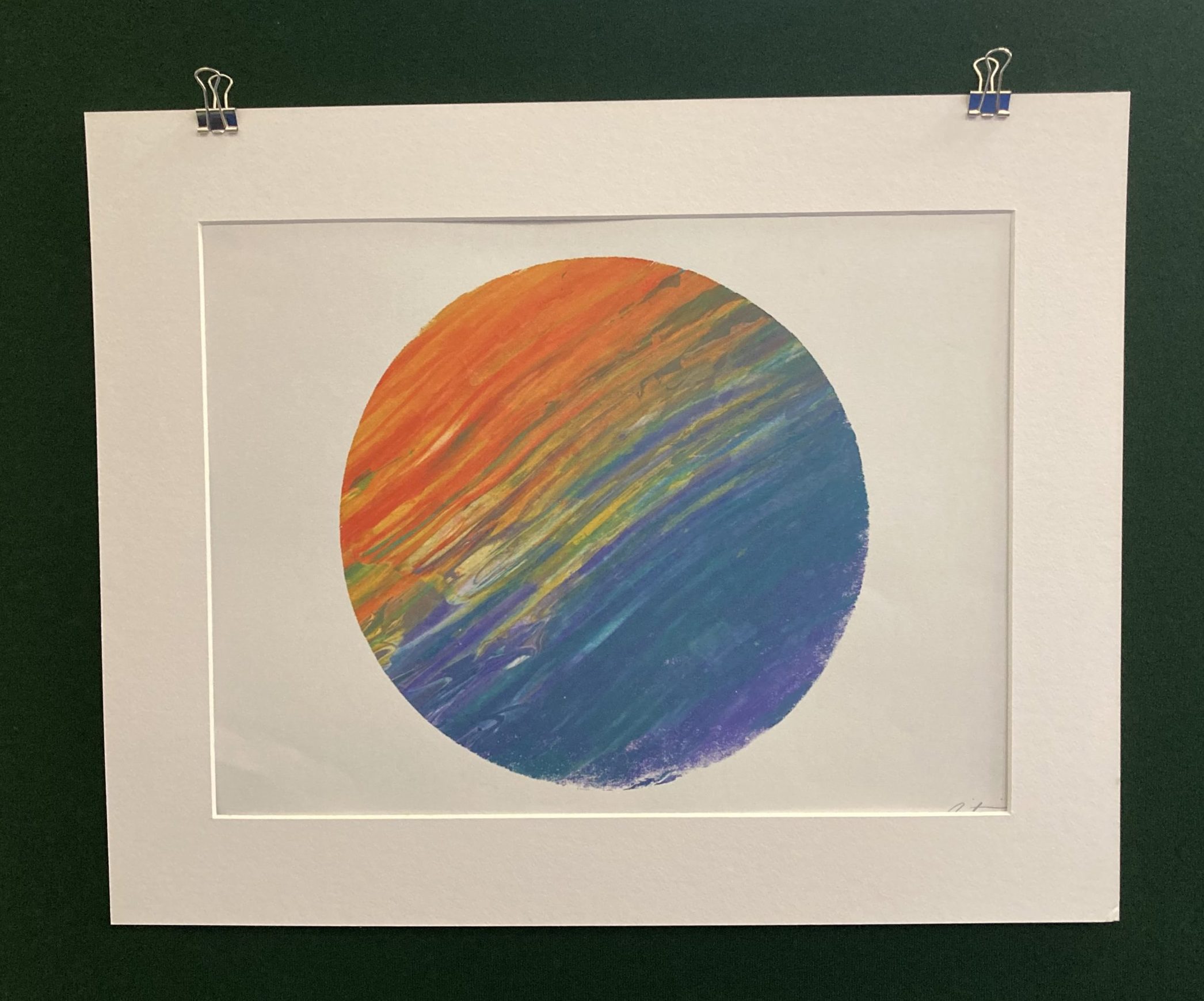 God says (Genesis 1:14-19):
God says (Genesis 1:14-19):
Then God said, “Let there be lights in the sky to separate day from night. These lights will be used for signs, seasons, days, and years. They will be in the sky to give light to the earth.” And it happened.
So God made the two large lights. He made the brighter light to rule the day and made the smaller light to rule the night. He also made the stars. God put all these in the sky to shine on the earth, to rule over the day and over the night, and to separate the light from the darkness. God saw that all these things were good. Evening passed, and morning came. This was the fourth day.
Scientists say:
The first galaxies were formed just 400 million years after the Big Bang, however, these collapsed and reformed over and over until we eventually became our home solar system. One of the oldest planets in the Milky way currently discovered by the Hubble telescope is 13 billion years old, much older than our own.
Our little solar system is roughly 4.6 billion years old. It formed from the Solar Nebula -a giant cloud of dust and gas – which collapsed, span really fast turning into a flat disk, and began to pull in towards the centre to form the sun with the planets forming a disk around it.
Some interesting facts:
– We’re able to have total solar eclipses because the sun is exactly 400x larger than the moon, and the moon is 400x closer to earth.
– There are more stars in the sky (a septillion!) than there are grains of sand on Earth (7.5 quintillion) and each one of those has the potential to have its own solar system.
– It’s estimated that the Milky way (our home galaxy) creates up to 7 new stars each year.
We are but a speck in the universe. You can fit 1300 Earths inside Jupiter, and 1000 Jupiters inside of the sun. You can fit 9.3 billion suns into the largest known star in our galaxy (VY Canister Majoris). There are over 200 billion stars in our galaxy, and there are billions of galaxies just in our observable universe. One of the largest galaxies we know of (IC 1101) is 50x larger than the Milky Way and contains 100 trillion stars.

God says (Genesis 1:20-23):
Then God said, “Let the water be filled with living things, and let birds fly in the air above the earth.” So God created the large sea animals and every living thing that moves in the sea. The sea is filled with these living things, with each one producing more of its own kind. He also made every bird that flies, and each bird produced more of its own kind. God saw that this was good.
God blessed them and said, “Have many young ones so that you may grow in number. Fill the water of the seas, and let the birds grow in number on the earth.” Evening passed, and morning came. This was the fifth day.
Scientists say:
For a long time, the ocean life was content to be small and simple, but as the Earth and its atmosphere changed, the life in the oceans had too as well. During the Ordovician Period, temperatures dropped and the sea levels also dropped as more and more of it was formed into ice. Most of the sea life had still not formed a backbone, so relied on shells and armour to protect them from predators. There were a few vertebrates emerging during this period though.
252 million years ago, there was a mass extinction caused by an extreme change in the environment. There were massive volcanic eruptions spewing toxic gasses into the atmosphere and acid rain fell and changed the ph of the oceans. 90% of marine life was wiped out in 60,000 years. The variety of marine life was now very minimal.
In the Mesozoic era, Pangea split apart and separated the oceans and the world warmed to raise the sea levels once more. Reptiles began to inhabit the waters, just as the dinosaurs had taken over the land. Larger more interdependent ecosystems evolved. Coral reefs, plankton and a structured food chain made the oceans very similar to what we know today.
Artist’s note: I’ve mentioned dinosaurs here. I’m bringing them in with the birds, as another name for both is a ‘raptor’ and as more research is completed, the similarities between the two are becoming more and more apparent. The word translated as birds in this passage could also be translated as ‘flying things’, therefore, we cannot rule out that the original meaning was raptor (general) instead of bird (specifically). Please consider this as you continue.
Around 417 million years ago, the lungfish developed the ability to breathe for a time out of water so they do not die if their pond dries out. A few million years later and we begin to see four-legged creatures in the shallower waters, making way for amphibians and reptiles.
Around 250 million years ago, we see dinosaurs roaming the land and sea. There is some controversy in when dinosaurs began to evolve into birds, but some evidence suggests it was as long as 210 million years ago. 168 million years ago, feathered flightless dinosaurs evolved paving the way for birds. It wasn’t until 60 million years later that the first ‘bird’, as we would recognise it today, evolved.
Questions to consider:
– Could birds include the dinosaurs as well? At least as an evolutionary step from sea to sky?
– Does this evolutionary trail make sense as they react to their environments?
– How does this section of the evolution theory differ or coincide with the creation story?
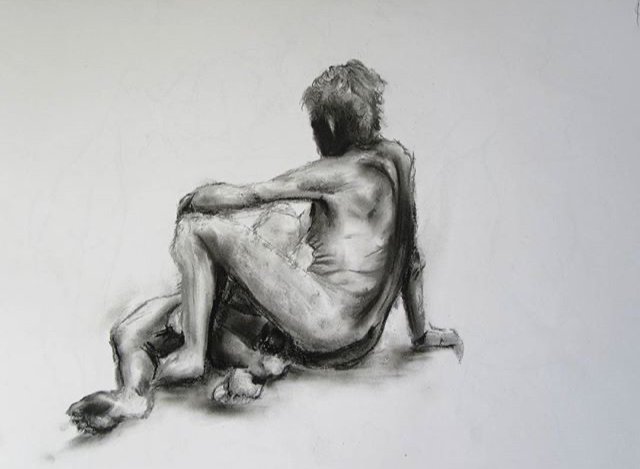
God says (Genesis 1:24-25):
Then God said, “Let the earth be filled with animals, each producing more of its own kind. Let there be tame animals and small crawling animals and wild animals, and let each produce more of its kind.” And it happened. So God made the wild animals, the tame animals, and all the small crawling animals to produce more of their own kind. God saw that this was good.
Scientists say:
65 million years ago, we saw the extinction event that wipes out all giant reptiles. Although mammals have existed and evolved from ‘mammal-like reptiles- 250 million years before, this extinction event paved the way for mammals to dominate the Earth. Two million years after this, primates split into lemurs and apes.
God says (Genesis 1:26-31)
Then God said, “Let us make human beings in our image and likeness. And let them rule over the fish in the sea and the birds in the sky, over the tame animals, over all the earth, and over all the small crawling animals on the earth.”
So God created human beings in his image. In the image of God he created them. He created them male and female. God blessed them and said, “Have many children and grow in number. Fill the earth and be its master. Rule over the fish in the sea and over the birds in the sky and over every living thing that moves on the earth.”
God said, “Look, I have given you all the plants that have grain for seeds and all the trees whose fruits have seeds in them. They will be food for you. I have given all the green plants as food for every wild animal, every bird of the air, and every small crawling animal.” And it happened. God looked at everything he had made, and it was very good. Evening passed, and morning came. This was the sixth day.
Scientists say:
40 million years ago, the first higher primates evolved. 25 million years ago saw the split off of apes from the ‘Old World Monkeys’. From here, various apes evolve, and then six million years ago, we see humans developing from chimpanzees and bonobos.
Through mutation, genetic recombination, chromosomal abnormalities, reproductive isolation, and finally natural selection, we evolved from homo habilias, to homo erectus, through neanderthal to modern day humans.
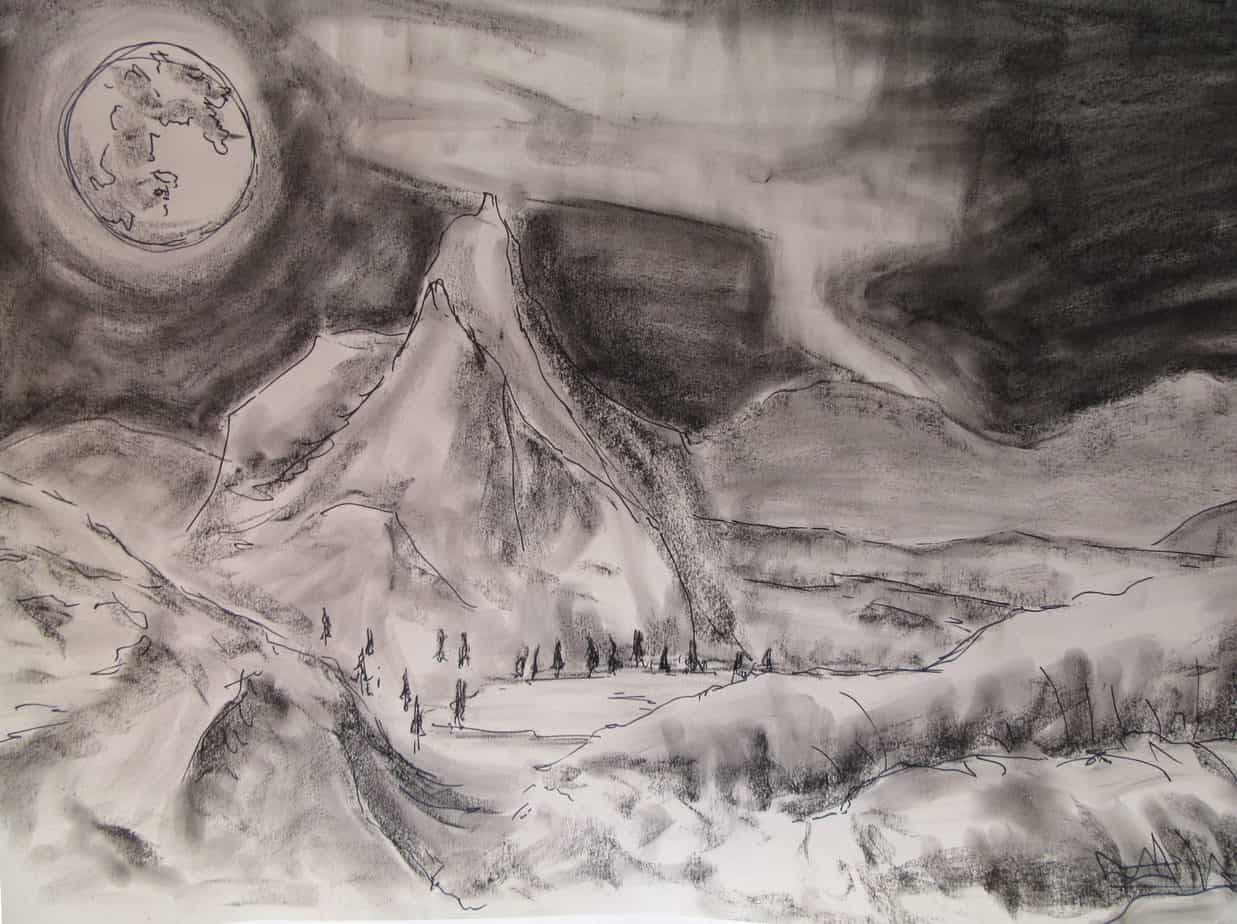
God says (Genesis 2:1-3):
So the sky, the earth, and all that filled them were finished. By the seventh day God finished the work he had been doing, so he rested from all his work. God blessed the seventh day and made it a holy day, because on that day he rested from all the work he had done in creating the world.
Artist’s note:
The world is so beautiful and full of wonder. Whether you believe that God has entrusted us to look after it, or you just like to call it home, it is becoming ever more clear that we need to do what we can to preserve and sustain this world, the environment and the plants and animals who inhabit it.
Some words from the bible:
“Tell the people of Israel this: ‘When you enter the land I will give you, let it have a special time of rest, to honour the Lord. You may plant seed in your field for six years, and you may trim your vineyards for six years and bring in their fruits. But during the seventh year, you must let the land rest.
(Leviticus 25:2-4)
“I look at your heavens, which you made with your fingers. I see the moon and the stars, which you created. But why are people important to you? Why do you take care of human beings? …You put them in charge of everything you made. You put all things under their control: all the sheep, the cattle and the wild animals…the birds in the sky, the fish in the sea and everything that lives underwater.”
(Psalm 8:3-8)